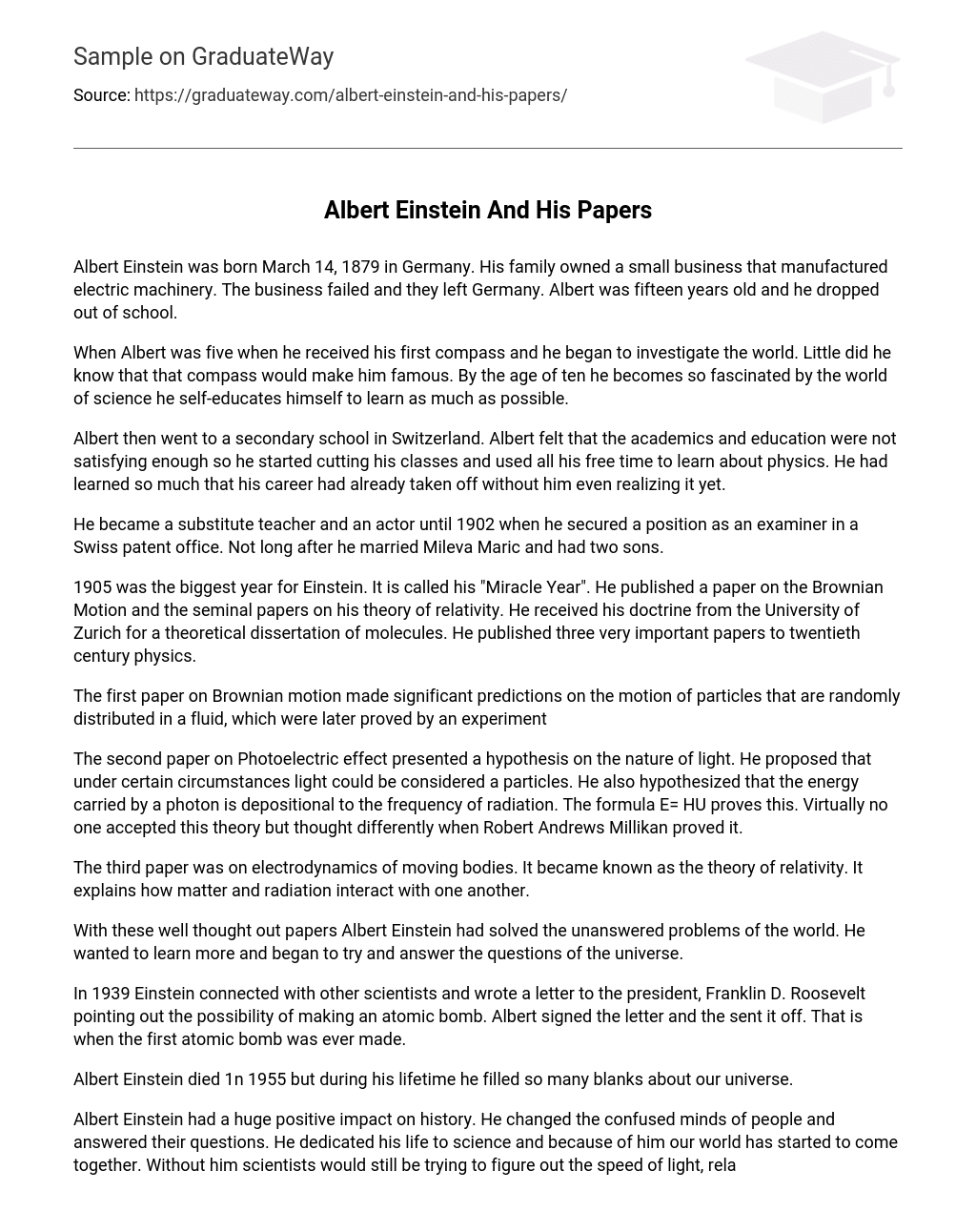Albert Einstein, born on March 14, 1879 in Germany, came from a family involved in the production of electric machinery. However, their business failed and they were compelled to depart from Germany. At fifteen years old, Albert chose to drop out of school.
Albert’s journey in the world began at the age of five when he received a compass. Little did he know that this simple tool would later bring him fame. As he turned ten, his passion for science intensified and he dedicated himself to self-education.
Albert attended a secondary school in Switzerland, but he was unhappy with the academics and education. As a result, he started skipping classes and dedicating all his free time to studying physics. Little did he know, his self-directed learning was already establishing the groundwork for his future profession.
After working as a substitute teacher and actor, he secured a position as an examiner in a Swiss patent office in 1902. Following this, he married Mileva Maric and became the father of two sons.
1905 was a significant year for Einstein, known as his “Miracle Year”. During this year, he made several remarkable achievements including publishing a paper on the Brownian Motion and seminal papers on his theory of relativity. Additionally, he obtained his doctorate from the University of Zurich based on a theoretical dissertation regarding molecules. He published three highly notable papers that contributed substantially to twentieth-century physics.
The initial publication on Brownian motion presented important hypotheses about the movement of particles that are randomly dispersed in a liquid. These hypotheses were subsequently confirmed through an experiment.
The second paper on the Photoelectric effect introduced the idea that light can be understood as particles in certain scenarios. It also proposed that the energy carried by a photon is directly related to the frequency of radiation, represented by the formula E=HU. This concept initially faced resistance but was later validated by Robert Andrews Millikan.
The theory of relativity, also known as the theory of the electrodynamics of moving bodies, explores the interaction between matter and radiation.
Albert Einstein, through his precise and detailed papers, not only solved the world’s unanswered problems but also embarked on a journey to unravel the mysteries of the universe.
In 1939, Albert Einstein and other scientists wrote a letter to President Franklin D. Roosevelt, notifying him about the potential of constructing an atomic bomb. The letter contained Einstein’s own signature and was subsequently dispatched, signifying the commencement of the first atomic bomb’s development.
Despite Albert Einstein’s passing in 1955, his contributions to our understanding of the mysteries of the universe were profound.
Albert Einstein’s immense impact on history is evident in his ability to address people’s doubts and offer solutions to their questions. His unwavering dedication to science has driven worldwide advancement and harmony. Without his revolutionary achievements, scientists would still struggle with comprehending key principles like the speed of light, relativity, and atomic weight. Additionally, he played a vital role in educating humanity and fostering a deeper fascination with the wonders of the natural world.
Albert Einstein’s most significant accomplishment was his discovery of the relationship between energy and mass, as expressed through the iconic equation E= MC^2. In his renowned speech, Einstein eloquently explains that mass and energy are merely diverse manifestations of an identical entity.
The equation, found by the extraordinary scientist Einstein, still has a significant effect on the world. It has given us knowledge that we unknowingly use in our everyday lives. An instance of this is our comprehension of the speed of light, enabling us to harness its power and understand concepts like sound velocity and relativity. Einstein’s scientific contributions are numerous and have greatly impacted our world. Without his commitment, we would be faced with countless unresolved inquiries about the essence of our existence.
Albert Einstein’s contributions have made advancements in technology possible. Telephones, computers, televisions, and other electronic devices are some examples of these advancements. Additionally, his theories have played a crucial role in the development of the atomic bomb used during wartime. This emphasizes the significant influence that one person’s theory can have compared to collective efforts.





